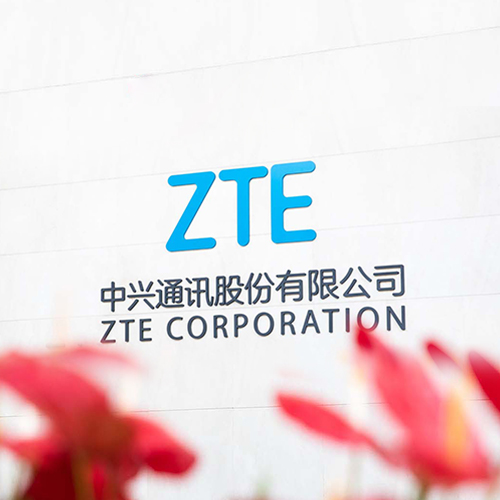Researchers successfully set new record for 800G PDM-16QAM long-haul transmission with WDM signals over 1,200-Kilometer TeraWaveTM fibre links
1 July 2016, Shenzhen, China – ZTE Corporation (0763.HK / 000063.SZ), a major international provider of telecommunications, enterprise and consumer technology solutions for the Mobile Internet, today announced that it has demonstrated a record-breaking single-carrier 800G long-haul high-speed transmission result, successfully transmitting 120-Gbaud wavelength-division multiplexing (WDM) 16QAM signals over 1,200-kilometre terrestrial fibre links. This is the first experiment with the highest symbol rate reported so far for electrical time division multiplexing (ETDM)-based 16QAM signals. The result, once again, sets a benchmark for the global optical networking industry, boosting further development of new technologies and supporting the next-generation transport standard to cope with the exponential growth of IP traffic.
The successful test demonstrated the generation and WDM transmission of the highest baud rate single-carrier 120-Gbaud electronic time-division multiplexing (ETDM) polarisation-division multiplexing (PDM)-16QAM optical signals. Both transmitter-side, and optical pre-emphasis and receiver-side maximum likelihood sequence estimation (MLSE) are utilised to mitigate the narrow filtering effect caused by bandwidth limitation of the opto-electronic components. Twelve WDM channels at 150-GHz grid, each loaded with 960-Gb/s (800 Gb/s data signals & 20 percent forward error correction (FEC) emulated overhead bits) over 1,200km link based on the 100km-spans of TeraWaveTM optical fibre are demonstrated. The achieved data rate interface ensured spectral efficiency of 5.33b/s/Hz.
Dr. Jianjun Yu, the Chief Scientist at ZTE US Optical Lab and Fellow at The Optical Society (OSA), said: “Thanks to the high baud rate signals generation, transport interfaces with bit-rates of up to 1Tb/s will be achieved in the near future. We can expect that bit rates beyond 1Tb/s, such as 1.6Tb/s, will be introduced as Ethernet standard rates since it would be a logical upward path rate from the 400Gb Ethernet interface, which is based on high baud rate signals and high order modulation formats. ZTE has been relentless in pushing forward-looking research and development on the single carrier 400G transmissions and beyond, and we have key technologies for future Tb/s solutions.”
ZTE has long been committed to R&D in 400G/1T (and beyond) technologies, as well as their applications and has already provided several key innovations in this field. In 2013, ZTE completed data signaling at speeds of 400Gb/s over a distance of more than 5,000km, through 25 reconfigurable optical add-drop multiplexer (ROADM) nodes without electrical repeater. In 2014, ZTE achieved 20 dense wavelength division multiplexing (DWDM) channels of 400Gb/s single-carrier polarisation-division multiplexing-quadrature phase shift keying (PDM-QPSK) signals to successfully transmit to 3,600km in standard single-mode fibre when the spectrum efficiency is improved to 4b/s/Hz. In 2015, ZTE US Optical Lab collaborated with OFS America to realise a 400Gb/s single-carrier PDM-QPSK signal transmission over 10,000km, a world record for 400Gb/s transmission. In January 2016, together with T-Mobile Austria, a top-level telecom operator in Austria, ZTE successfully completed a 10G/100G/400G hybrid transmission test on existing networks, indicating that 400G optical transport networks (OTNs) had become available for complex long haul applications.
